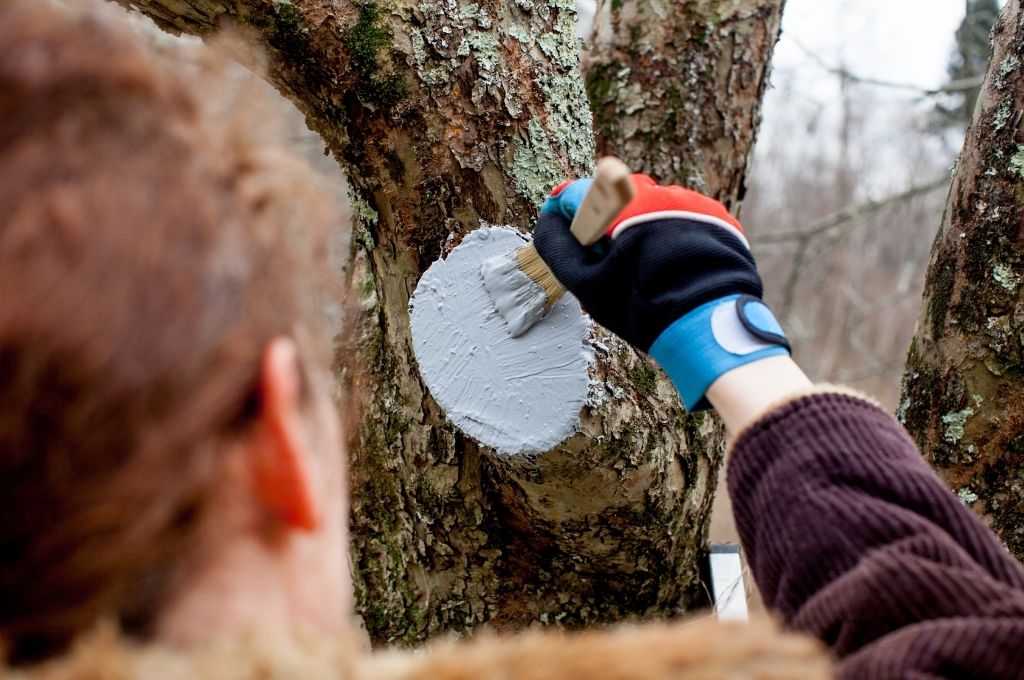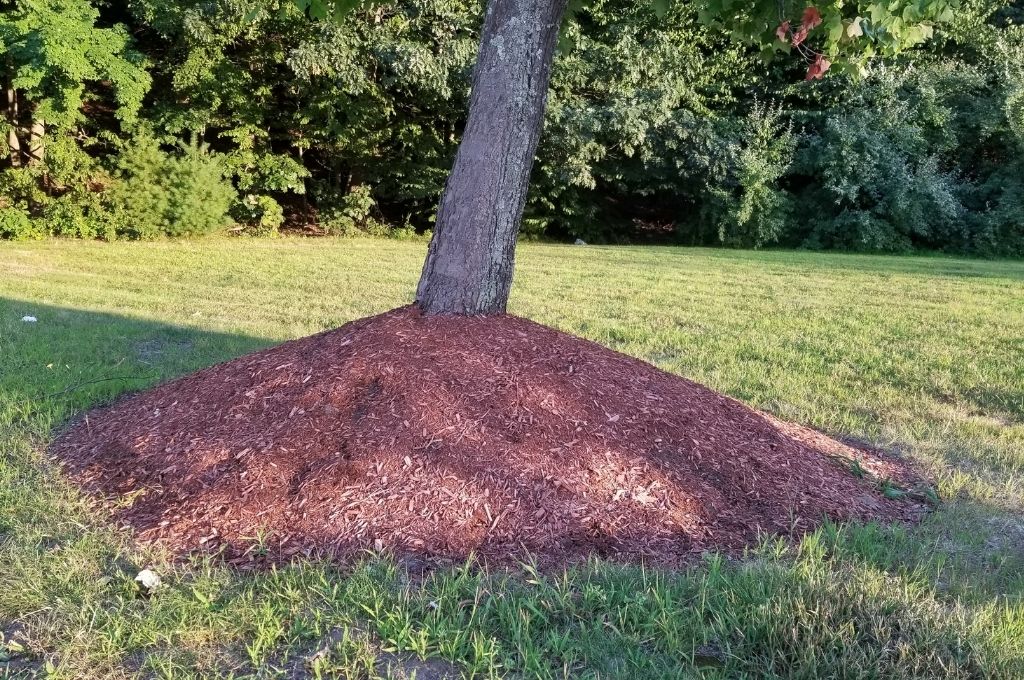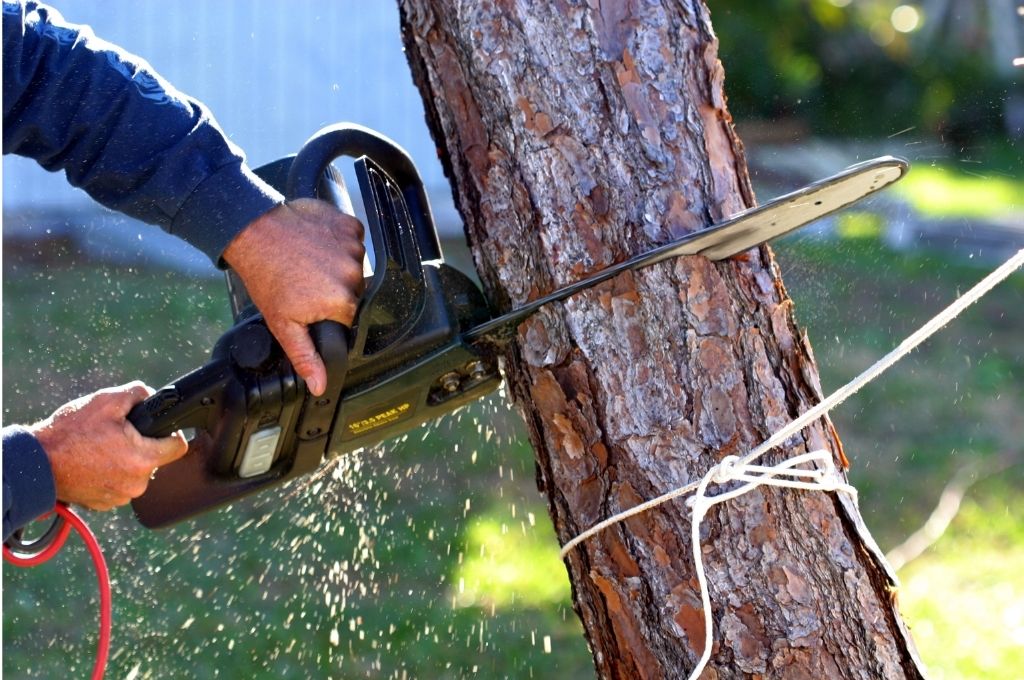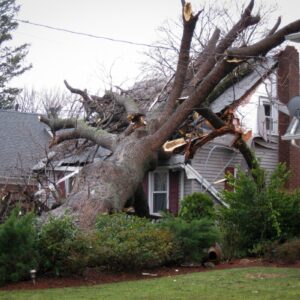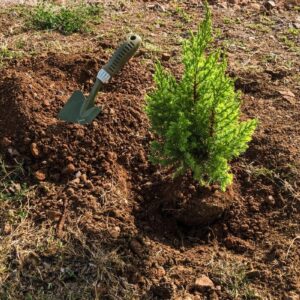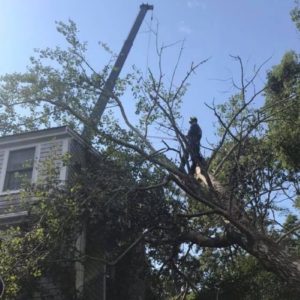When considering tree care services, many people look at price as the primary consideration. There’s an assumption that choosing a less expensive company or service option will give you a “better deal.” But the fact is that when it comes to providing tree care services, you usually “get what you pay for”. Lower cost often equals lower quality, with worse outcomes for your trees and, in the long run, higher ongoing costs for you.
In this article, we look at how low-quality tree care can affect your trees, your safety, and your wallet.
If you’ve ever heard some say any of the following, you’ve heard one of the many justifications for hiring the lowest-cost tree service provider.
- “It’s just a tree …”
- “It costs too much to do …”
- “The tree will recover …”
- “Trees in nature don’t need pruning …”
What these statements miss is that trees are an investment that keeps appreciating over time. Not only does a well-maintained tree increase the value of your property, but it can also lower heating bills, protect you from storms, clear the air you breathe, and reduce stress levels. We think those are all things that make getting the best tree care services a worthwhile investment.
Common Examples of Poor Tree Care Practices
There are some tree care practices that are, unfortunately, still used today although they’ve long been discredited by tree care experts. Below are some of the problems we’re often called in to fix after the initial work is done.
Tree Topping
We often see trees that have been topped in an effort to make them smaller. No reputable tree care professional will top a tree; we know that it causes irreparable harm to the tree and will eventually kill it. But uneducated and inexperienced “tree guys” still offer this service.
Improper Pruning
There’s so much more to proper tree pruning than simply sawing off limbs! At the most basic level, pruning involves removing damaged, dead, or structurally weak limbs to improve tree health and minimize damage caused by falling limbs. More advanced pruning methods involve improving the tree’s structure and long-term health.
All pruning work should follow the American National Standards Institute standard for tree pruning, called ANSI A300. This standard recommends, and in some cases requires, the use of specific tools, cutting techniques, and pruning methods to help keep trees healthy and safe. Professional tree care crews will follow the ANSI A300 standards; others won’t. And the difference is highly visible.
For example, poor pruning includes:
- Lion tailing
- Stub cuts
- Flush cuts
- Heading back large branches
- Torn bark
- Pruning too much off
- Pruning at the wrong time
- Painting over pruning cuts
- And much more!
See the Pruning Mistakes to Avoid
Aside from the aesthetic issue (poorly pruned trees don’t look good!), a bad pruning job can compromise the health and longevity of the tree. Here are some of the usual outcomes of poor pruning:
- Each pruning cut causes a wound that opens the tree up to fungal and bacterial infection, as well as attacks from insect pests. The bigger the wound, the bigger the risk – especially when pruning is done during the growing season.
- The stressed tree responds by putting out watersprouts and suckers. These thin, upright stems are weakly attached (so they’re likely to break off in windy conditions), grow in unattractive clumps, and look nothing like the rest of the tree. They’ll need to be cut out every year to prevent the tree from becoming overgrown (and dangerous), costing you far more money in the long run than what a proper pruning job would’ve cost.
- Cut branches can’t be stuck back on and they don’t grow back. Pruning too much, or pruning the wrong branches, can permanently disfigure the tree – and even make it so unbalanced that it becomes a safety hazard.
- Parts of the tree that are damaged by improper pruning cuts die back, leaving stubs and dead branches throughout the canopy.
See When to Prune Trees in Massachusetts
Painting Over Pruning Cuts
We still see trees with bright white “tree paint” covering pruning cuts. Or, sometimes, cuts are coated with a tar-like material.
The reality is that painting pruning cuts doesn’t help anything except the company’s profits. In fact, it creates a nice, moist space for fungi and bacteria to destroy the underlying wood; we’ve often peeled away tree paint only to find a totally rotted area beneath it.
The one exception is branches pruned during the growing season in areas where oak wilt is prevalent. Oak wilt is heading our way but hasn’t yet been found in our area – and the better solution is to avoid pruning oaks until they’re dormant.
Filling Hollow Trees
Yes, people used to fill hollow trees, usually with cement. And yes, people still do this today. Cavity filling (filling hollow trees) was practiced by arborists for many years but isn’t done any more by professionals in the tree care industry.
Recent research has shown that cavity filling isn’t helpful. In fact, we now know that filling a hollow tree or a cavity in a tree with cement can damage the tree. The cement inside the tree is solid – it doesn’t move or bend. However, the tree moves constantly, rubbing against the filling and causing ongoing internal damage to the tree. This creates a perfect environment for the wood decay fungi that created the hollow in the first place to invade the remaining healthy tissue of the tree.
Instead of saving the tree, the end result is a declining tree that’s more expensive to remove because of the cement inside it.
There’s no reason to fill a cavity other than for aesthetic reasons; it doesn’t improve the tree’s health and doesn’t offer extra support. If a hollow tree needs structural support, a tree care professional will recommend cabling, bracing, propping, tree guying, or removing the tree – not cavity filling.
Piling Mulch Around Trees
Extension educators, arborists, and horticulturists have warned about the dangers of “mulch volcanoes” for decades. We know that mulch piled around the base of a tree is extremely harmful and, in many cases, lethal to the tree.
The piled-up mulch creates a warm, wet environment against the tree’s trunk and root flare. It’s the perfect environment for fungal pathogens, which quickly start to rot the base of your tree. After a few years, the tree is usually beyond salvage and you’ll be faced with an expensive tree removal job.
Yet in neighborhood after neighborhood, we consistently see tall piles of bright reddish mulch carefully placed around trees in a deadly, decay-inducing ring.
Any tree care professional who understands what mulch is and how to use it would never suggest or create a mulch volcano around your trees. Just because the neighbor’s landscaper or “tree guy” does it doesn’t mean it’s the right thing to do!
Using Climbing Spikes When Pruning Trees
Climbing spikes are sharp steel spikes attached to a tree climber’s leg by leather straps and padded supports. They make it easier to climb a tree, especially for inexperienced climbers.
A tree worker should only use spikes to climb trees that are being removed.
When these spikes are used on living trees, it traumatizes the tree and creates unnecessary damage. Each puncture from a climbing spike kills tree tissue (though this varies from tree to tree). In most cases, isolated wounds caused by spikes will seal. However, over time, groupings of spike holes can cause the entire area on the trunk to die back with no chance of recovery. This happens when a tree is repeatedly pruned by someone using spikes.
Professional tree care companies understand the dangers of spikes and only use them for tree removal (or in a few specific situations where there’s no reasonable alternative). Instead, they use the proper tree equipment to ascend the tree, such as ropes and climbing harnesses. This, coupled with their training and experience, contributes to the future health of the tree.
Other “Red Flags” Indicating Poor Tree Care
Low-Priced Tree Removal
There’s a vast difference between what you get on a lowball quote for tree removal versus a reasonable quote.
We get it – no one likes to pay to have a tree cut down. And many people think they can do it themself. But when you’ve seen as many disastrous DIY or low-cost tree removal failures as we have, you realize that it’s not worth risking your house, car, or even your life by choosing the cheapest option.
When you get a tree removal quote, what you don’t see is:
- all of the hours of skills and safety training the crew members go through regularly,
- years of on-the-job experience with all kinds of trees in all kinds of situations,
- the well-maintained equipment that’s used to take down a tree (cranes and bucket trucks aren’t cheap!),
- insurance premiums that protect not just the workers but the clients as well (tree work is one of the most dangerous professions on earth and insurance premiums reflect that),
- licenses and business registration fees,
- and more.
It’s all of those things that make the difference between a job well done and a tree that lands on your house (yes, we’ve had to lift trees off houses after a DIY or poor tree removal gone wrong).
See DIY Tree Work: Should You Do It Yourself?
Not using PPE
Personal protective equipment (or PPE) is a phrase many people are familiar with in the COVID era. But it also applies to tree workers.
Proper PPE is essential for ensuring the safety of anyone working in and around trees, particularly if heavy equipment or cutting tools are used. At a minimum, tree care workers should wear:
- a hard hat,
- safety glasses or face screen,
- ear protection when working around loud equipment, and
- chaps (when using a chainsaw).
Quite aside from the potential insurance costs associated with a serious injury on your property, watching an injury occur (or seeing the aftermath of an injury) can be devastating. You don’t want to see someone lose a leg – or worse.
See What You Need to Know About Tree Service Insurance
Opt for Better Tree Care
While poor tree care practices may cost you less in the short term, they’re considered to be poor practices because they harm the tree – and cost you more in the long term.
If you want your trees to remain healthy, safe, and attractive for the long term, only hire experienced, knowledgeable tree care professionals who will do the job right. Yes, it may cost you a little more up front, but it’s well worth it!
Blog Topics
Recent Posts
What's Happening? Stay Informed!
Stay on top of local events, pest and disease updates, tree and landscape tips, and more. Delivered straight to your inbox each month.


